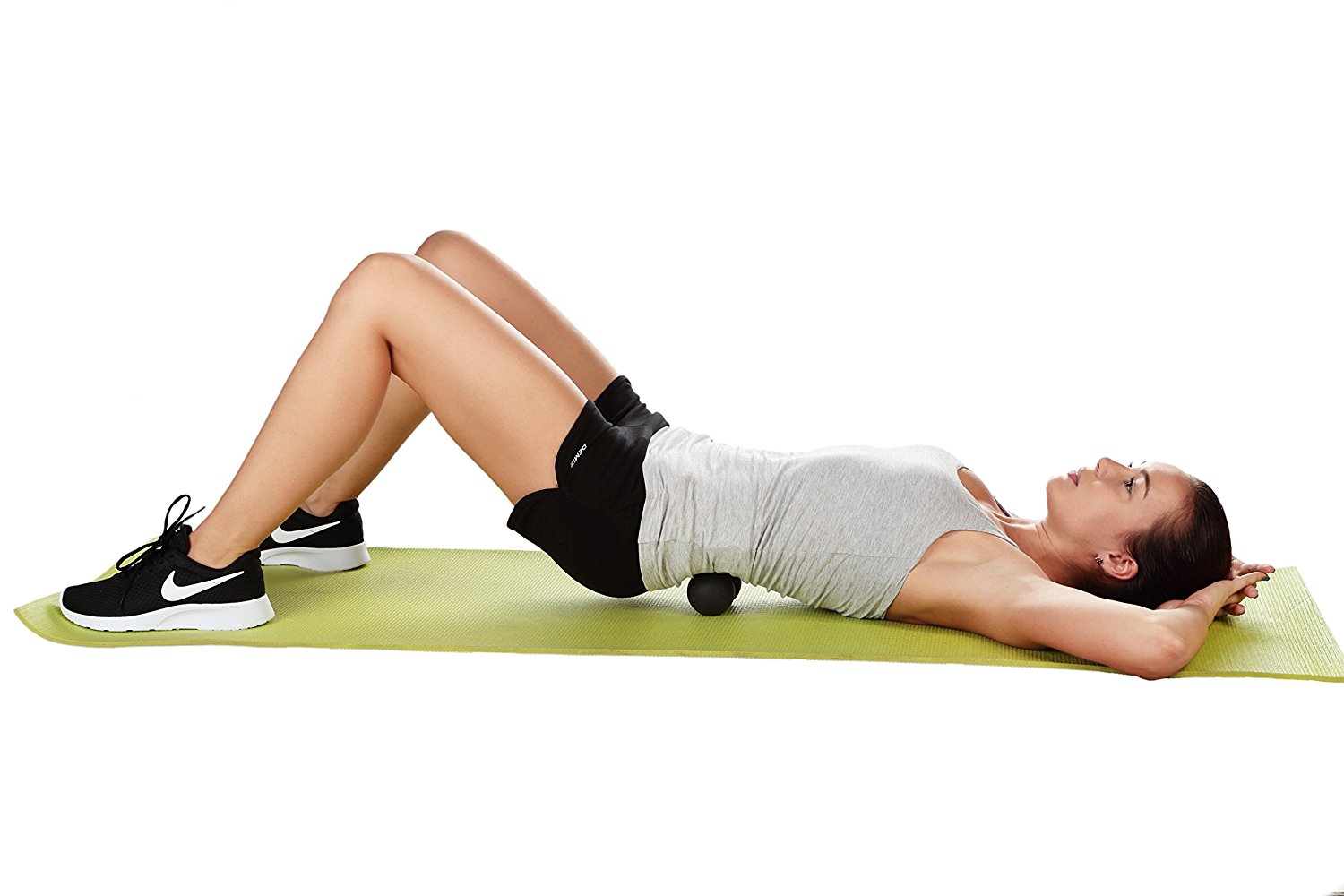What is myofascial release? It’s a highly effective and low risk method involving manual application of continuous pressure into affected tissues in order to restore function and relieve pain. There are two parts to the word myofascial. Myo is muscle, and fascia is the connective tissue surrounding it. We oftentimes get myofascial pain from repetitive strain or a muscle injury. When muscles are under stress, they may become injured and form trigger points. A trigger point is a tight muscle knot that causes muscle pain and shortening. You can use certain tools or simply your hands to perform myofascial release.
Trigger Points and Referred Pain
It’s very common to feel pain caused by myofascial trigger points. If a trigger point is pressed on, the muscle fibers will contract and it will feel very unpleasant. Sometimes a trigger point in one area can refer painful sensation to another area. This is called referred pain. For example a trapezius muscle which is at the top of your shoulder can have a trigger point that will refer pain to your neck and head. Headaches are commonly caused by active trigger points irradiating painful impulses from the shoulder, neck, and even facial muscles. This is called a tension headache and it can exist on its own, or add to your migraine to cause pain which is a lot more severe.
On average from 36 to 42% of our body weight is made up from muscles. Therefore muscle tissue plays a significant role in keeping us healthy. We can easily perform our everyday activities when our muscles work as they should. However when they start containing trigger points – tension, stiffness, pain, and functional limitations are soon to follow. You can have a predisposition to getting trigger points if you have a bad posture, are under constant mechanical stress, have an imbalance in your body such as a leg length discrepancy, are not conditioned, or do not sleep well.
Myofascial Pain Syndrome
If you are diagnosed with Myofascial Pain Syndrome, it means that the trigger points in your muscles are the main source of your symptoms. If you suffer from a condition, such as arthritis, or bulging discs, trigger points can be actually thought of as being accessory to your pain, when in reality they can be its primary source.
Almost every part of your body has a special area of medicine looking after it (kidneys, lungs, heart, etc.). It is quite strange that medicine has no specialty dealing with muscles. Trigger point induced myofascial pain is therefore frequently ignored by healthcare workers and patients as a cause of pain.
 Despite being very common, myofascial pain is not a part of mainstream medical training. Hence most patients suffering from myofascial pain syndrome still receive traditional anti-inflammatory drugs, muscle-relaxing medications, anti-depressants or exercise programs. Tigger points can actually worsen under strengthening exercises and pharmaceuticals have very little to no symptomatic effect.
Despite being very common, myofascial pain is not a part of mainstream medical training. Hence most patients suffering from myofascial pain syndrome still receive traditional anti-inflammatory drugs, muscle-relaxing medications, anti-depressants or exercise programs. Tigger points can actually worsen under strengthening exercises and pharmaceuticals have very little to no symptomatic effect.
Today some medical doctors are starting to recognize the need for myofascial release and are beginning to refer their patients to massage and trigger point therapy professionals. This is encouraging to those, suffering from myofascial pain, as well as to the doctors, who enjoy patient appreciation.
Active Trigger Points vs Passive Trigger Points
After it is formed, a trigger point can be either active or latent. Active trigger points are what prompts people to seek help, as the pain is relentless severe and exhausting. If you press on a trigger point, you will feel pain around it. The muscle that harbors a trigger point is usually weakened and not flexible. It feels like a tight band and can compress nerves, causing more symptoms. Referred pain from this area feels like a deep dull pressing ache. If left untreated, surrounding muscles will develop secondary trigger points in order to pick up the slack. It is common for people with chronic pain to actually have several patterns of referred pain that overlap each other. This makes the diagnosis and consecutive management a lot more complicated.
If a trigger point exists in the muscle tissue but does not present any symptoms, it is called latent. You don’t even know it’s there, until you apply pressure on it and feel the painful response. All people have at least several of those. Latent trigger points matter as well, as they can affect muscle movement patterns by making the muscles rigid and weak. A trigger point can wake up, going from latent to active if it is provoked by excessive loads, stress, fatigue, or sometimes even a cold draft.
Using Myofascial Release to Relieve Trigger Points
Most minor trigger points can be treated. Oftentimes you can get a better effect with self-massage then by going to a professional massage therapist. At times it is essential to get certified massage treatment, but you can also rescue yourself from trigger points in a more affordable way.
The majority of trigger points are minor and very easy to get rid of with self-massage. You can use your own thumbs or cheap tools like a lacrosse ball. Although some trigger points may persevere, most are quite easy to deal with. So how can this obvious method be so powerful? Pain from trigger points is not caused by a severe problem with the tissue. Since there really is not much to be fixed, muscle knots can be rubbed out with self-massage.
Management guidelines for trigger points
To perform myofascial release on a simple muscle knot it may be enough to rub it with your fingers for a short time period. If you feel that a trigger point is moderately severe, you may have to massage it for a few minutes. Tough trigger points may require 5-minute sessions several times per day for about a week. Another effective way to soothe and relax an active trigger point is to progressively apply a hot compress.
You can use your fingertips, thumbs, elbows, and fists. Other simple tools include different balls, such as a tennis ball or a lacrosse ball. A foam roller will work okay, but it may not be enough, as its contact area with the body is way too large. You can either press on the muscle knot and hold it for some time, or rub it with little strokes in any direction.
 It’s important to apply just the right amount of pressure. You should feel some pain during the process, but start gently and work your way up. The feeling should be satisfying, intense, and well-defined. The pain has to be “good”, and you have to be able to take it and relax at the same time. If you experience an adverse reaction shortly after your session, you probably overdid it. If your tissue does not adapt to myofascial release therapy, maybe the problem is not the trigger points.
It’s important to apply just the right amount of pressure. You should feel some pain during the process, but start gently and work your way up. The feeling should be satisfying, intense, and well-defined. The pain has to be “good”, and you have to be able to take it and relax at the same time. If you experience an adverse reaction shortly after your session, you probably overdid it. If your tissue does not adapt to myofascial release therapy, maybe the problem is not the trigger points.
Where to apply the pressure?
Start by trusting your gut and rub where you feel the pain. You can investigate an area around the focus of your pain, but keep it small. It is possible that the responsible trigger point is not where the pain is. Don’t sweat it at this point, as this is just entry-level treatment that you are trying. Massaging a trigger point will most likely achieve a partial or a full myofascial release and you will be able to see some improvement as soon as the next morning.
